Six artworks are seated in the exhibition room at ISAF. They watch a screen showing fragments of each work’s corresponding film. The pieces watch the films and are, in turn, watched by the films. A mixed installation emerges, composed from reused objects, textile, ceramics, painting, video, and, of course, seats, an instance of communication between the world of art and the world of film – a single installation made up of works created for or connected to the cinema auditorium. “Honey, I got you a seat”, conceived and curated by Cristina Vasilescu as a response to the invitation of F-sides to bring cinema and art together, associates a selection of films compiled by Georgiana Vrajitoru with a selection of commissioned artworks (except one) in a process that is somewhat the opposite of how Sara Maldoror (also present in the film selection) sometimes finds herself inspired by a painting to create a film.
F-Sides is a film initiative that started from the popularization of the notion of the female gaze. It is interested in new subjectivities, which it wishes to display through a dialogue between film and how it is presented in the artworld. Once a month, for a few months, there was a screening at the Elvire Popesco Cinema which was accompanied by an artwork seated in the auditorium. Such an initiative, and this project specifically, aims to educate a wide audience (their screenings traveled to multiple locations in Romania) about topics such as feminism, ableism, orientalism, decolonization, etc.
The first film in the selection is Compensation (1999), directed by Zeinabu irene Davis, who was part of the L.A. Rebellion, in dialogue with Dimitrie Luca Gora’s video work. The film shows two love stories, separated in time, between two Black people: a deaf woman and a non-deaf man. On a seat in the screening room is the video work, on VHS, played on a tube TV, with a doily and seagull-shaped bauble on top. Gora’s video talks about the difficulties of living with hearing loss in Romania, punctuated by pictures of personalities such as Beethoven, Goya, and Marlee Matlin, the first deaf actress who won an Oscar.
The second film, Western (2017, d. Valeska Grisebach) explores, in artist Mihaela Vasiliu’s view, an attempt to find a common language between two cultures, one local and one intrusive, colonizing even, namely Bulgarian and German. Starting from this idea, Mihaela created her sculpture while thinking about interspecies communication, symbiosis, parasitism, commensalism, and the unexpected results of such interactions. The sculpture was conceived as a complete intruder within the “cinema auditorium’s ecosystem – a non-functional, foreign seat symbolizing the other,” according to the artist: “I wanted to explore relations of tension, miscommunication between the seats already installed in the auditorium and the new one.” The difference between the movie theater seats and Mihaela Vasiliu’s seat-art-object is also a reflection of the two different species of collective characters in the film. The artist associates with a Thonet chair (a German product popular with the Romanian working class) a Balkan instrument covered in pyro-engravings illustrating the relations between different species, such as the dominion of a parasitic wasp over vegetation.
Lorena Cocioni enters into a dialogue with Valie Export’s film Invisible Adversaries (1977). The artist viewed the film, which is about schizophrenia, as an interrogation of the difference between public and private space and of the borders established by the body, as tackling the discourse associating feminism with mental illness. Lorena starts from the discomfort felt by the protagonist, Anna, in her city, apartment, bed, body, and dialogue with her partner. Another starting point is the invasion present in the film, a territorial, personal, bodily invasion, and the protection against it. Lorena’s sculpture, a ceramic prosthesis-corset, alludes to women’s (in)security in their own bodies, inspired by a line from the movie: “Flesh is my dress, but the flesh is too tight.” Anna’s pathological affection becomes an external instrument of the body, which can be put on like a dress. Lorena’s corset is, according to her, an intruder, present in a womb-like space – the cinema auditorium, with its darkness and textures. According to the artist, the corset is the middle piece in a matryoshka doll: the cinema which contains the seat, the seat which contains the corset, the corset which contains the wearer, the wearer who contains their bones, covers their organs, etc.
The Wachowski sisters’ film Bound (1996) was paired with Hortensia Mi Kafchin’s painting Gaia in a Bathing Suit, in which femininity finds itself in the center of the universe in a bizarre form.
Kira Kovalenko’s film Unclenching the Fists (2021) makes use of a dull tension that sometimes explodes, in the view of Sabina Tupan, the artist chosen to dialogue with the film: the tension within the family, the oppressive silence at the dinner table, the non-verbal conversation with the brother, the exchange of sharp glances between the family members. It is about the female body and its imprisonment in the traumatic everyday household. A character caught in this unhealthy relationship with her family, which does not let her escape, a family made up of men depending on her support, a family she cares about but which she struggles against in order to escape. Sabina Tupan’s site-specific installation is made of red velvet of a similar shade to the upholstery of the other seats in the auditorium. Sabina wished to emphasize main character Ada’s intense wish to win her independence, but she is “stuck to her seat,” that is, to her family, which she wishes to escape from. In her works, Sabina often uses arms, hands, legs, especially in a personal motif of “giving a hand” – small hands that grow from yourself, reach out, when you need to find solutions to survive and, perhaps, emancipate yourself. The Outward, Sabina’s installation, wishes to convey to the audience the feeling of despair and struggle to escape in real time. The aim is to amplify the feeling you get as you watch the movie, as the hands trapped under the seat’s red velvet upholstery try to free themselves.
Iulia Toma’s art has interacted with film in the past as well. She worked on artificially aging film costumes, most notably for Radu Jude’s Aferim!, where she tried to create, as authentically and surgically precisely as possible, the fictional stages the same costume might pass through in 13 versions. “Through this work with clothing I came closer to film, trying to imagine, from a distance, what those people might be feeling. Every second experienced by the protagonist,” the artist said. Iulia Toma’s work is made up of three seven-meter textile pieces tied together which combine into a single strand winding around a seat. In her response to the film Sambizanga (1972, d. Sarah Maldoror), Iulia Toma starts from its three narratives: Domingo’s, Maria’s, and the Popular Movement for the Liberation of Angola’s, to which the two belong. The three narratives intersect. Though they are presented separately, the three characters are in fact one and the same for Iulia Toma, a character that seeks their liberation while facing obstacles. The artist is attached to a poetic vision of political film that Maldoror draws from, a vision criticized by the European left, which does not accept the idea of revolutionary patience.
The works that were present, one after another, at the Elvire Popesco Cinema and returned for the exhibition were joined by two installations by Dimitrie Gora and Sabina Tupan. The first is an ear-shaped pool with water dyed with pink acrylic paint. The work is a simplified depiction of the author’s life: the water filling his ears and preventing his hearing, the candle treatment that the artist was forced to undergo to be able to speak articulately, and an homage to his mother, Ecaterina Vrană, who did her best to have him live a relatively average life. In Gora’s “pink ear,” the candle, placed where the sound enters the ear, is also jab at people with unimpaired hearing, because just like the candle melts and shrinks, their hearing will also diminish with age, while the artist’s hearing will likely remain the same. In turn, Sabina Tupan stays close to the topic of escaping domestic bounds, continuing with the same leitmotif of the helping hands, preserving her reference to the film in her second work as well, unlike Gora. The sink present in the space has been padded with red velvet, and from it emerge hands that try to escape the hell of the woman oppressed within the family. The sink is chosen as a reference to the times when the protagonist of Kira Kovalenko’s film shows the strength of her own emancipation (when she calmly pours the perfume received from her father down the sink or pours water over her brother’s phone).
The exhibition, ending the project’s six-month duration, could be seen at the ISAF building between 26 October and 14 November.
Translated by Rareș Grozea
POSTED BY
Bogdan Bălan
Bogdan Bălan (b.1997) works in contemporary art, under various positions. He has graduated Art History and Theory at the National Arts University Bucharest with his thesis on Brazilian Anthropophagic...


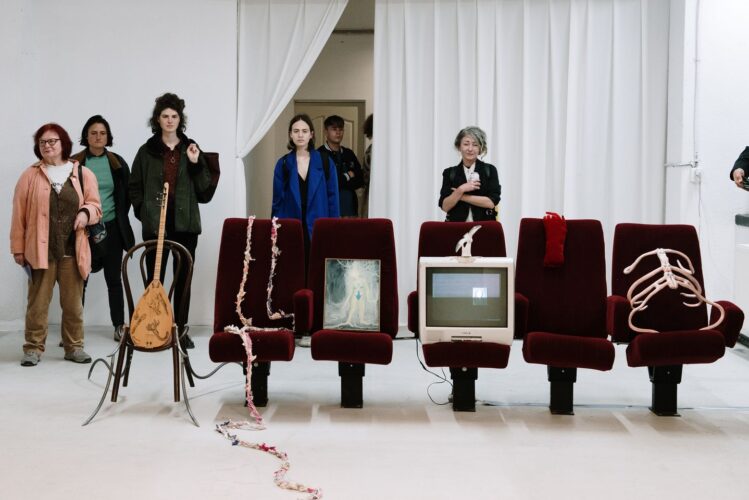
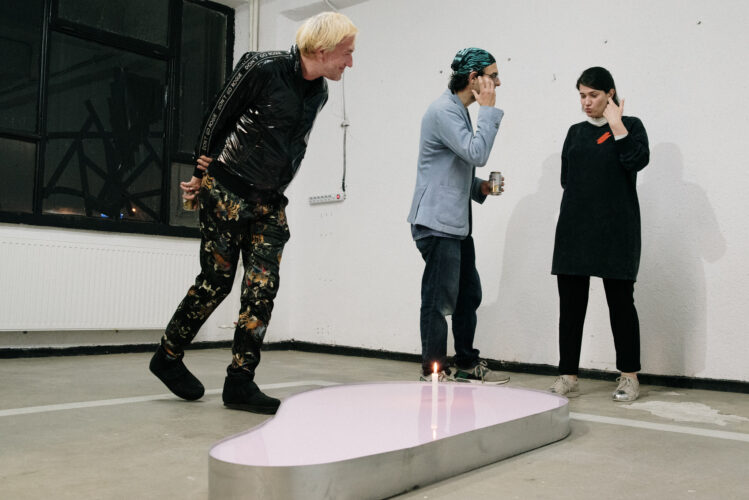
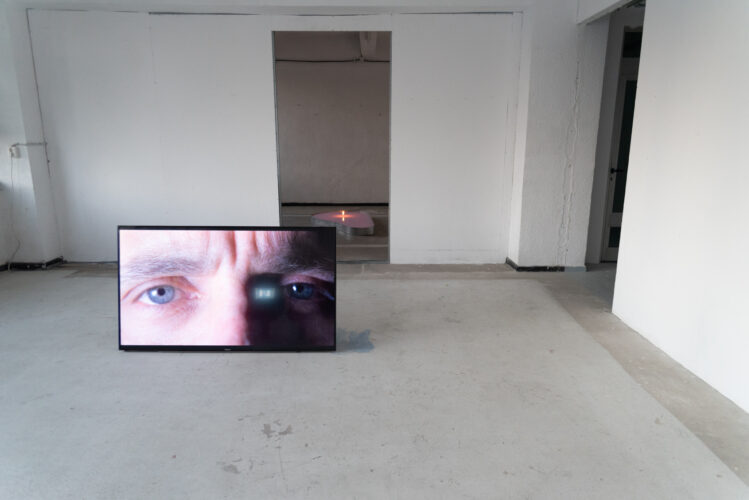
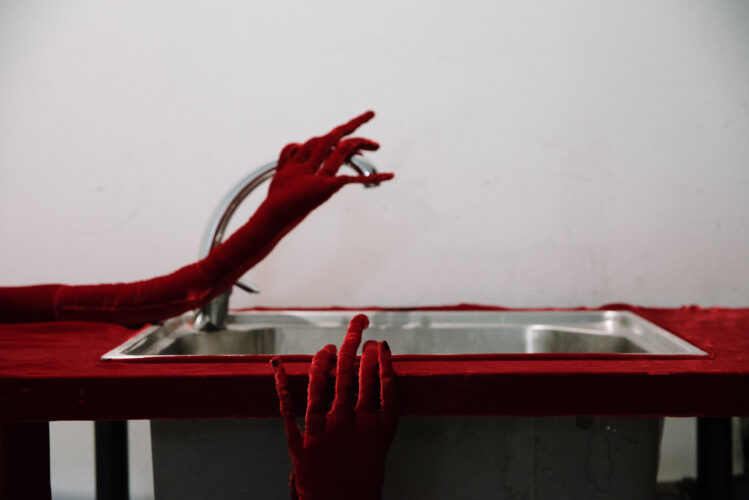
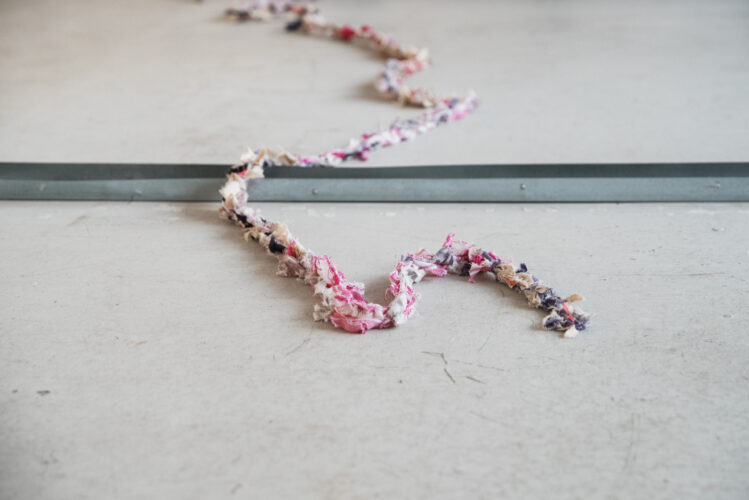
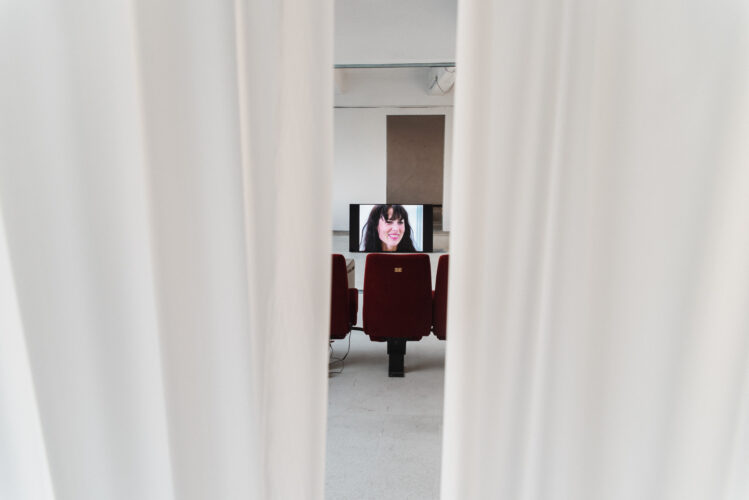

Comments are closed here.